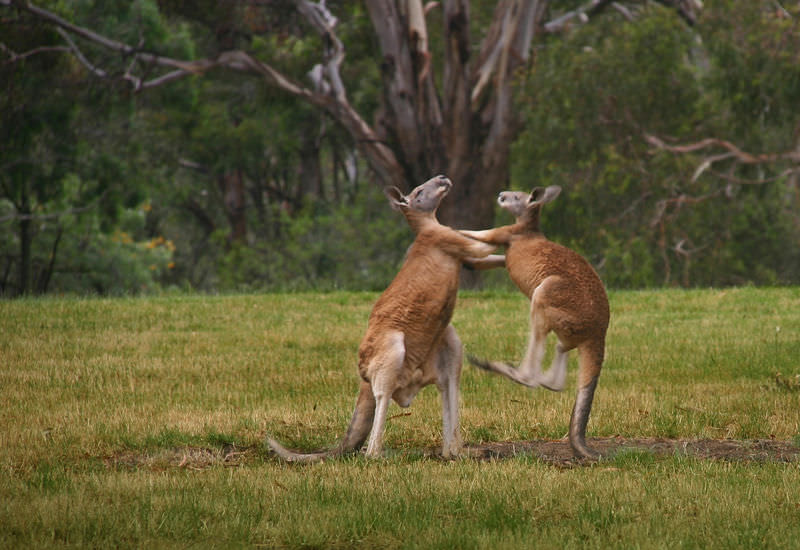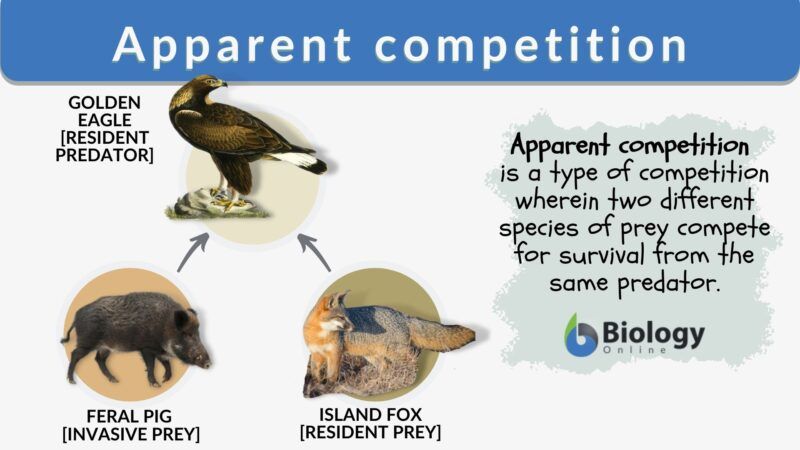Competition Study Guide
Introduction:
-
Competition is a struggle between two organisms for a required outcome. We know there is competition everywhere, at work, market, sports, political parties.
-
Competition occurs when two species want the same resource, and there is not enough of it available, and as a result, they compete for it.
What is Competition in Biology?
- Competition in biology is a biological interaction between or among the same or different organisms where the organisms fight for resources.
- This interaction mainly occurs for food sources. However, organisms fight for other sources such as territory, shelter, mates, etc. This interaction results in fitness change of the organisms that share the same resources.
- Competition in ecology is the key factor that influences the community arrangement in an environment. It results in either the competitor’s adaptation or the weaker competitor’s death.
- The extent of competition depends on the usage of resources by species. If two different species utilize the same resource, the competition will be fierce.
- Though the competition is advantageous for the stronger species as the weaker species tend to deplete due to lack of food, there are examples where the stronger species have also gone extinct due to evolution and other environmental factors which have flipped the situation.
- Competition examples include trees growing taller to compete for sunlight and two birds fighting over a worm.
Types of Competition
Competition is classified into various types based on different factors.
- Taxonomically, competition is classified as intraspecific and interspecific.
- They are also classified into interference, exploitative and apparent competition based on the competition mechanism.
- Thirdly, based on their impact on the ecosystem, they are classified into direct and indirect competition.
Taxonomic Classification
Intraspecific competition
- Intraspecific competition occurs between organisms of the same species for the same resource, such as food.
- Intraspecific competition is usually symmetric as the organisms competing are of the same size.
- Intraspecific competition becomes severe when the number of species is high because members require similar resources.
This competition in animals leads to a reduction in health in both members, but the healthier one usually survives and multiplies itself. Intraspecific competition examples include a male deer competing with another male deer for a mate.
Interspecific competition
- Interspecific competition is a competition that occurs between two members of different species for the same resources.
- Interspecific competition is asymmetric as the organisms’ size differs and has additional capabilities.
- The interspecific competition also tends to become severe when the similar nutrition requirement and environmental lifestyle of the organism increases.
- Interspecific competition tends to get dangerous compared to intraspecific competition as different species usually differ in strength, which impacts the competition’s degree.
Interspecific competition examples include sharks and whales that feed on the same seafood.
Mechanism-based Classification
1. Interference competition
In interference competition, the competition occurs directly between the members. The members interfere with survival, forage, habitat, reproduction, etc. Interference competition involves. An example of interference competition is a tiger and a lion competing on the same deer.
2. Exploitative competition
Exploitative competition is an indirect type of competition where species interact for common resources such as food, territory, etc. For example, a bear catching a fish across a river affects the availability of fish for other bears across different river points.
3. Apparent competition
Apparent competition is an indirect competition where the species do not directly compete, but they affect each other by being preyed on by a single predator.
An example of an apparent competition is that of a hawk that preys on both squirrels and mice. The increase in the population of the squirrel causes a decrease in the population of mice, as the hawk preys on squirrels and eventually leads to a rise in the population of hawks, which then affects the population of mice.
Classification based on Ecological Impact
1. Direct competition
In direct competition, the species interact with each other and directly influence the resources available in the ecosystem. For example, the giraffes compete when the leaves become scarce.
2. Indirect competition
In indirect competition, the species do not interact, but they influence the available resources. The competition example includes the elephants staying near the pond affecting the elephants, which stay away from the pond by decreasing the availability of water in the pond.
Conclusion:
- Competition in ecology majorly for the species’ resources to survive, including food, water, and air.
- If the resources are sufficient, the species live comfortably without much competition.
- There are a lot of factors that affect competition, such as environmental change, natural disasters, diseases, and human activity.
- The competition affects the structure of the community and affects the evolutionary process and adaptation in a community.
FAQs:
1. What is competition in biology examples?
Competition in biology is a biological interaction between or among the same or different organisms where the organisms fight for resources.For example, trees in the forest grow tall to compete for sunlight.
2. Why is competition important in biology?
Competition is very important in biology because it plays a key role in ecology. The leading competitor survives and gets a chance to pass their traits to the new generations.
3. What are competition and its types?
Competition is classified into various types based on different factors. Taxonomically, competition is classified as intraspecific and interspecific. They are classified into interference, exploitative and apparent competition based on the competition mechanism. Thirdly, based on their impact on the ecosystem, they are classified as direct and indirect competition.
4. What is an example of competition in an ecosystem?
Competition examples in an ecosystem are giraffes. The giraffe’s long neck helps it get food easily with very little to nil competition.
5. What is an example of competition between plants?
An example of competition between plants is peach trees produce chemicals and release them into the earth that discourages the growth of other plants.
We hope you enjoyed studying this lesson and learned something cool about the Competition! Join our Discord community to get any questions you may have answered and to engage with other students just like you! Don’t forget to download our App to experience our fun, VR classrooms – we promise, it makes studying much more fun! 😎
Sources:
- Competition. https://bio.libretexts.org/Bookshelves/Introductory_and_General_Biology/Book%3A_Introductory_Biology_(CK-12)/06%3A_Ecology/6.15%3A_Competition. Accessed 3 Dec, 2021.
- Competition Interaction- Definition and Types with Examples. https://microbenotes.com/competition/. Accessed 3 Dec, 2021.
- Competition. https://www.biologyonline.com/dictionary/competition. Accessed 3 Dec, 2021.
- Competition. https://flexbooks.ck12.org/cbook/ck-12-biology-flexbook-2.0/section/6.14/primary/lesson/competition-bio/. Accessed 3 Dec, 2021. Accessed 3 Dec, 2021.



